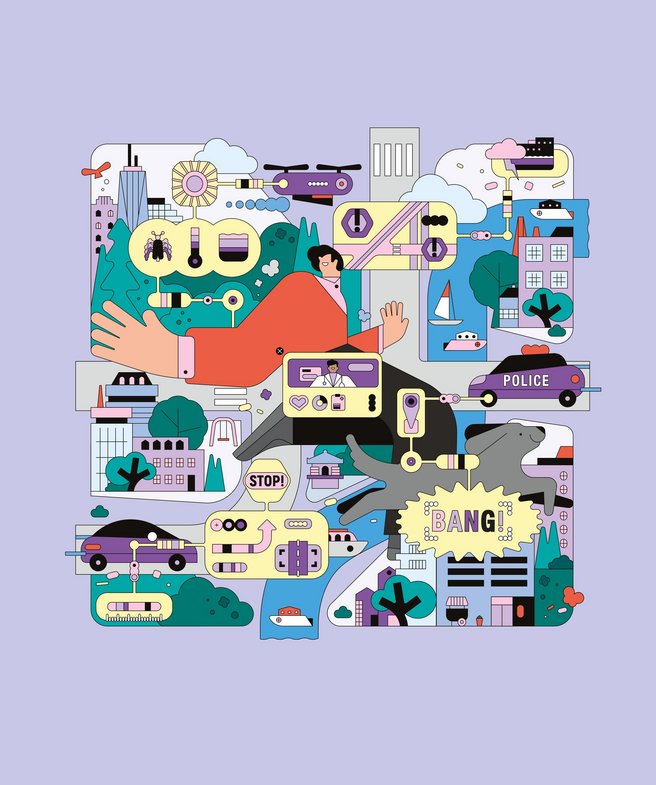SAFE, SAFER, SMART

The earth shakes and a tsunami begins to surge—and people know about it, several minutes before it hits land. This is possible today thanks to sensors on the coast and seabed that send data about the earthquake via GPS to the mainland, where millions of people can then get an emergency alert on their cell phones. This Smart Region achievement protects people all over the world from natural disasters. Even in our immediate environment, data helps prevent the worst on a daily basis. During a pandemic, for instance, vital information can be bundled in an app so that authorities and the populace will always be up to date on the availability of hospital beds, doctors, vaccines and other resources. Even in more normal times, cameras and sensors assist in monitoring roads and buildings, preventing accidents and helping solve crimes.
However, the crises in 2021 have revealed that there’s still a lot to be done in terms of digital networking. During the corona pandemic, vaccine campaigns were often too slow, also due to insufficient flows of information. People drowned in their homes during the catastrophic floods in Germany because they didn’t receive warnings or the urgency of the situation wasn’t clear. Forest fires in southern Europe, California and north Africa have shown affected communities how vital efficient warning systems will be in the future.
One person who is possibly following this more closely than anyone else in the world is Soo-Jin Kim. She is an executive at the OECD Centre for Entrepreneurship, SMEs, Regions and Cities. This department in the OECD, an intergovernmental economic organization, advises national and local governments in improving the effectiveness of Smart City systems. She says: “During the early stage of the corona pandemic, some countries such as South Korea proved to be much more prepared/equipped than some other countries because of their advanced degree of digitalization and their experience with past epidemics.” The South Korean capital Seoul, for example, benefited from the fact that it had already developed a data hub and a digital strategy to quickly trace and break chains of infection, even before the corona pandemic. Visits to shops and restaurants are recorded by scanning a QR code. While this is common practice in other countries, South Korea takes it a few smart steps further. If there’s an infection, the data flows to the Korea Disease Control and Prevention Agency (KDCA) for contact tracing, otherwise it’s deleted.
In addition, the KDCA also examines cashless transactions and cell phone networks to supplement the information on the whereabouts of infected persons and to send anonymized alerts to potential contacts. “South Korea has managed to balance data transparency and data privacy in their pandemic response due to a higher degree of public acceptance, which is not necessarily the case in other countries for cultural and historical reasons,” Soo-Jin Kim says. Nonetheless, Smart City concepts shouldn’t just be tailored to metropolitan areas. Rural and underdeveloped areas will require support in establishing Smart Regions. “If digitization strategies are thought through in an interdisciplinary way and include all parts of the population, this can produce smart communities where people can live more sustainably and safely,” she adds.
So how can we all benefit from clever algorithms and rapidly flowing data? The following five examples from disaster management, healthcare, crime prevention, environmental safety and road safety show what’s possible right now.